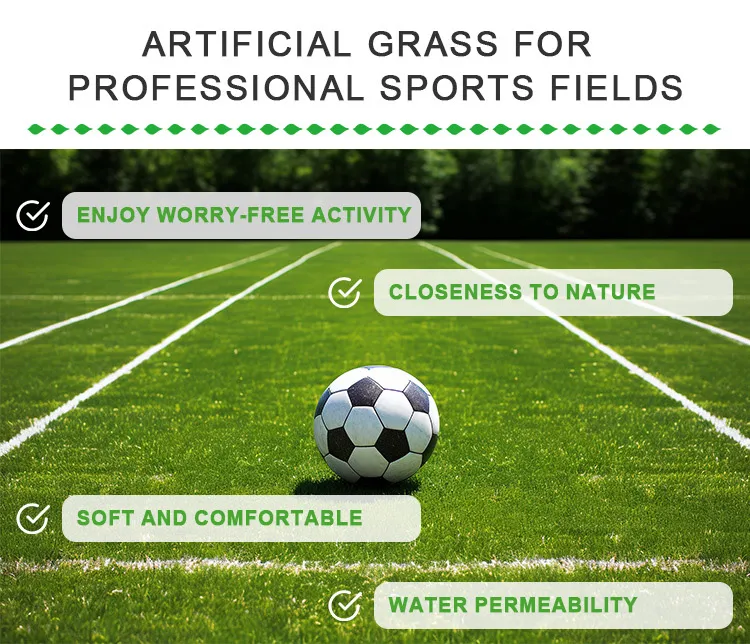
- Afrikaans
- Arabic
- Belarusian
- Bengali
- Czech
- Danish
- Dutch
- English
- Esperanto
- Estonian
- Finnish
- French
- German
- Greek
- Hindi
- Hungarian
- Icelandic
- Indonesian
- irish
- Italian
- Japanese
- kazakh
- Rwandese
- Korean
- Kyrgyz
- Lao
- Latin
- Latvian
- Malay
- Mongolian
- Myanmar
- Norwegian
- Persian
- Polish
- Portuguese
- Romanian
- Russian
- Serbian
- Spanish
- Swedish
- Tagalog
- Tajik
- Thai
- Turkish
- Turkmen
- Ukrainian
- Urdu
- Uighur
- Uzbek
- Vietnamese
Guide to Installing Indoor Artificial Turf for Sports and Recreation Spaces
Nov . 30, 2024 15:04 Back to list
The Art of Indoor Artificial Turf Installation
In recent years, indoor artificial turf has gained immense popularity across various sectors, transforming environments such as gyms, sports facilities, homes, and even commercial spaces. The benefits of installing artificial turf are numerous it is durable, low maintenance, and versatile, making it an ideal choice for various applications. This article will explore the essential steps and considerations involved in indoor artificial turf installation, ensuring that you achieve a professional and aesthetically pleasing result.
Step 1 Planning and Preparation
Before diving into the installation process, meticulous planning is crucial. Begin by assessing your space and determining the purpose of the artificial turf. Are you creating a play area for children, a workout zone, or a pet-friendly space? Each use case may require different turf types and additional features like padding or drainage systems.
Next, measure the area where you intend to install the turf. Accurate measurements will allow you to purchase the right amount of material, minimizing waste and saving on costs. Consider the layout, accounting for any obstacles such as columns, doors, or furniture that might affect the installation.
Step 2 Choosing the Right Turf
Selecting the right type of artificial turf is crucial to ensure durability and functionality. There are various types available, with different pile heights, materials, and densities. For indoor use, it's best to opt for turf designed specifically for indoor environments, as it usually has a softer feel and is less abrasive. Ensure the turf is of high quality, UV-resistant, and non-toxic, especially if it will be used by children or pets.
Step 3 Preparing the Subfloor
A well-prepared subfloor is the foundation of a successful turf installation. Start by cleaning the area thoroughly, removing any dust, debris, or existing flooring. If the subfloor is uneven, it is important to repair it before proceeding. You may use a self-leveling compound for a smooth and even surface.
Next, lay down a weed barrier or durable underlayment on the subfloor. This step helps to prevent any growth of weeds and provides an additional cushioned layer, enhancing the comfort of your artificial turf.
indoor artificial turf installation

Step 4 Cutting and Fitting the Turf
Once the subfloor is ready, it’s time to cut the turf to fit the designated area. Lay the rolls of turf out and cut them to size, ensuring the fibers are all facing the same direction for a natural look. It’s critical to ensure that seams are as tight and even as possible to avoid visible gaps. Use a sharp utility knife to make clean cuts, as this enhances the overall appearance of the finished product.
Step 5 Installation
With the turf cut to size, it’s time for the actual installation. Start by laying the turf pieces into place and securing them with adhesive or double-sided tape, depending on your chosen method. For larger installations, seams may require sewing for added durability. Ensure that you regularly check the alignment as you work your way across the area.
Once the turf is secured, it is essential to infill it appropriately, especially if the turf requires it for stability and comfort. Rubber or sand infill can help support the blades of grass, keeping them upright and providing the feel of natural grass underfoot.
Step 6 Finishing Touches
After installation, brush the turf with a stiff broom or power brush to lift the fibers and distribute the infill evenly. This step will enhance the natural look and feel of the turf. Lastly, take the time to inspect the entire area for any imperfections, and make necessary adjustments.
Conclusion
Installing indoor artificial turf can be a rewarding project that enhances the aesthetic and functionality of various spaces. By following these steps meticulously, you’ll ensure a successful installation that not only looks great but also performs well over time. Whether for recreation, sports, or landscaping, indoor artificial turf is a sustainable and practical solution that can adapt to various needs. Embrace the beauty and functionality of artificial turf and transform your indoor space today!
-
The Benefits of Artificial Turf for Indoors
NewsJul.15,2025
-
How Artificial Grass Suppliers Ensure Quality Products
NewsJul.15,2025
-
Artificial Grass and Pets: A Space for Relaxation
NewsJul.08,2025
-
Balcony & Outdoor Decoration with Artificial Grass
NewsJul.08,2025
-
Best Indoor Artificial Grass for Home
NewsJul.07,2025
-
Best Pet Turf for Dogs: Safe & Durable Artificial Grass Options
NewsJul.07,2025
Products categories









